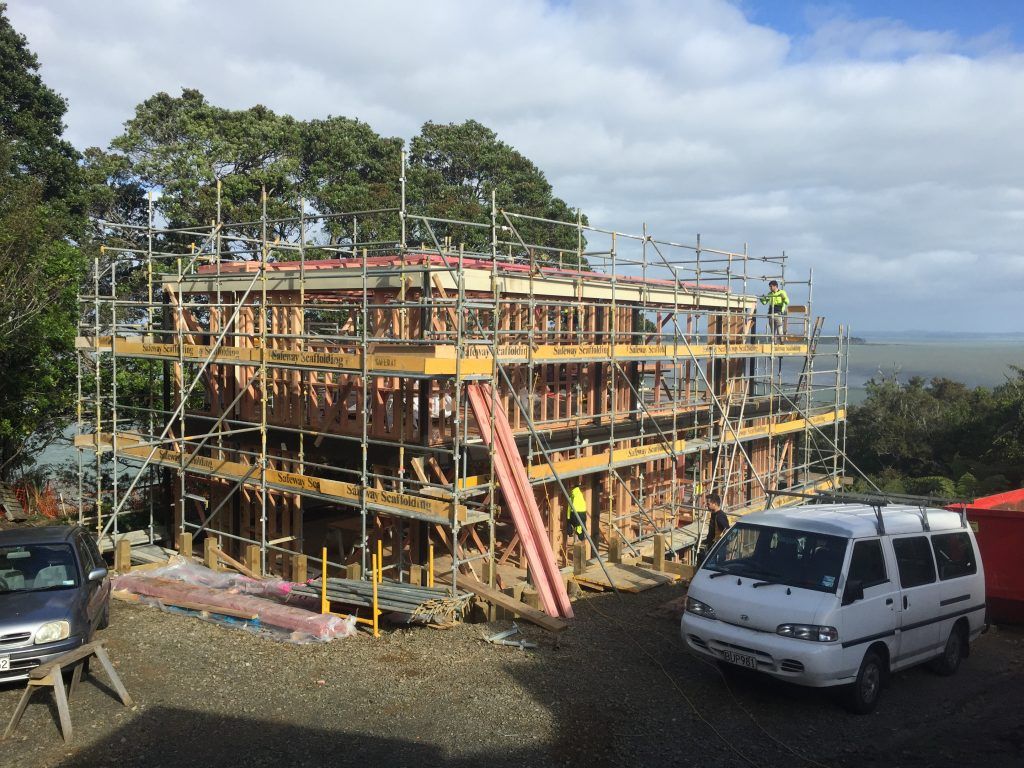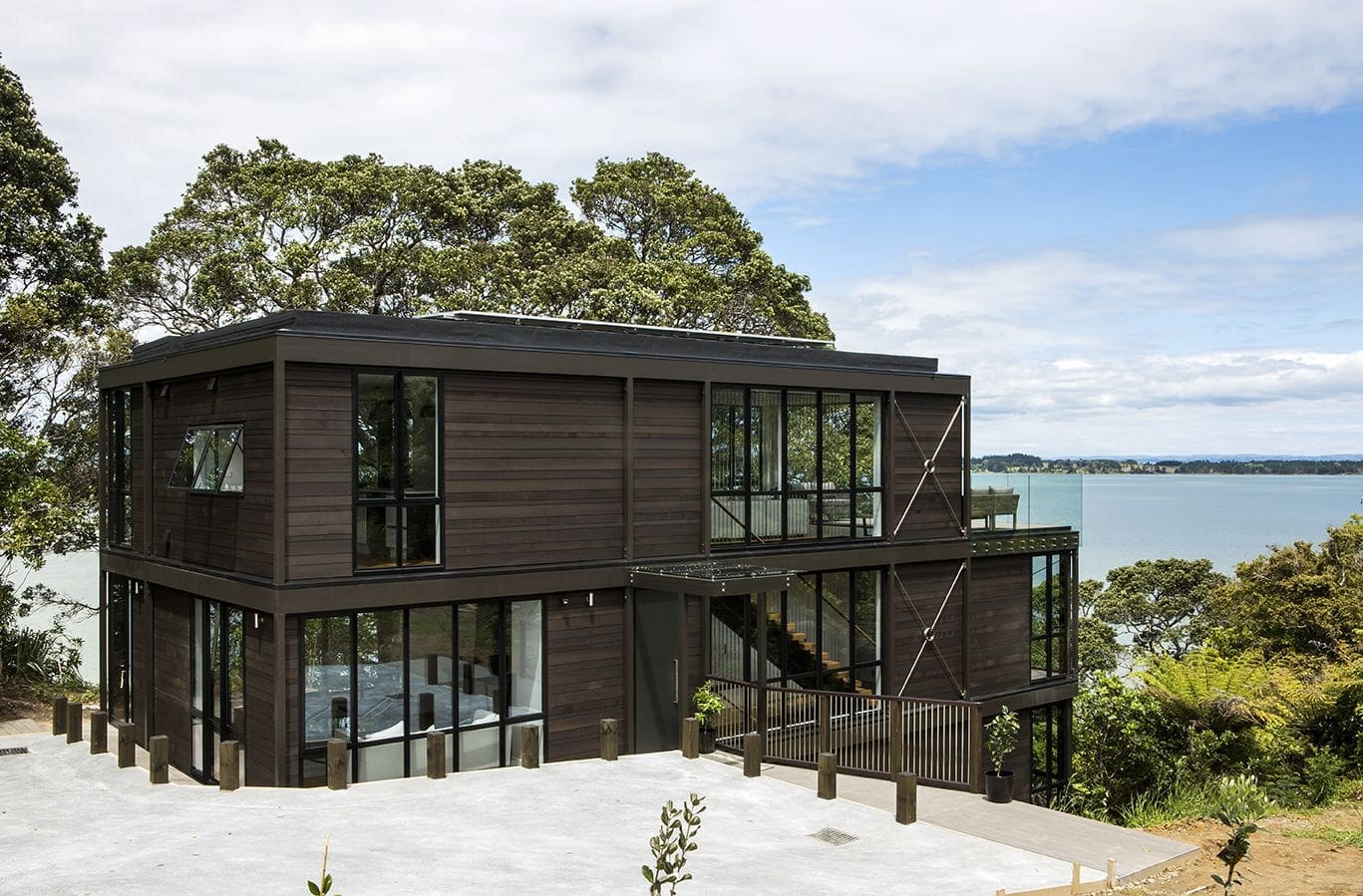Bringing Home The Lessons Of The Lockdown
As an SME operating in the design and construction industry, Box™ needs to be nimble. They believe in testing the waters of interesting design-and-build ideas but are quick to pivot if the uptake or financials don’t stack up. So what has the Covid crisis taught them?
Well, there’s the human side. Several Box™ clients contacted them to say just how grateful they were to have a house they enjoyed spending more time in (albeit under curious circumstances) – one couple even managed a home birth in their lounge during lockdown!
It’s easy to understand the practical angle of owning a home that can flex into a work-office without much notice (Box™ has long incorporated a study nook into the plans). But there is also the wellbeing factor inherent in having a home that is creatively yours alone – a place less of isolation than of sanctuary.

The business lessons of a shutdown are more complicated to tease out. Dan Heyworth, co-founder of Box™, acknowledges that, following the pandemic, clients will be even more conscious of where they spend their money. Value for the dollar will be uppermost in mind. “That doesn’t necessarily mean they’ll want to get the most inexpensive home possible using cheap materials but they will question how much space they need and whether a double garage is now completely necessary.”
Supporting New Zealand-made will also feature in future decision making. “Will the pandemic mark a sea-change for globalisation? I’d like to think so,” says Dan. “It’s all tied up in creating jobs and reinforcing regional and local identities.”
One aspect of this that Box™ needs to consider is their supply chain. At the moment, the ratio stands at roughly 30% NZ made, 30% Australian and 40% other. “We can access timber, steel, cement, aluminium and panel products that are made in New Zealand but will people be willing to pay a bit more to get behind the local economy?”
Imported products usually win out over Kiwi ones due to cost: Aotearoa simply doesn’t have the market scale to sustain local manufacturing at a competitive price. Yet some solutions just call for a new way of thinking. Here’s a for-instance: the making of tiles in New Zealand is hamstrung by the exorbitant price of machinery used to rectify the edges. “In the good-old days, tile edges weren’t immaculate,” says Dan. “Maybe, like the Japanese, we should grow an appreciation of crafted-ness and imperfection so that more companies like Middle Earth, who create handmade tiles, can thrive.”
In pushing for a greater percentage of the supply chain to be local, it’s not just the fixtures, fittings and decorative aspects that need to be sourced here – it’s thinking beyond the boundaries of the status quo. What if Box™ could develop an open-source design system that would empower architects to design and builders to construct homes using a kitset of locally produced parts? Those makers could be spread around the country so that regional economies would grow and the wealth be spread. “You might source assembled wall panels from a factory in Kaitaia and a bathroom pod from Te Awamutu and then hire a builder to put them together.”
This is not the type of prefabrication New Zealanders imagine [where an entire home is made in a factory and then delivered to site], but rather Design for Manufacturing and Assembly (DfMA). “It’s componentised construction aimed at reducing the cost of design, materials and labour, while ensuring building performance – a system commonly used in the airline and marine industry,” says Dan.

That leads into another point – the great debate regarding the viability of much-touted open-source architecture. This is where pre-approved construction systems are freely available to anyone who has the means to design or build. All well and good but there are obstacles. The information needs to be presented in a format that other designers can pick up and run with or adapt easily. They need to contain enough information for builders to price the assembly. And crucially, they need to be achievable with components and materials available in the local supply chain. “Plus the originators would have to be willing to give away the intellectual property for the common good – that’s a pretty big hurdle. It’s the Holy Grail of democratising architecture.”
Such blue-sky thinking is easy to dream up and discuss yet far more complex to put into practice. And where would it leave a company like Box™? “Well, we would still be required to take someone else’s design system, and make it beautiful. Homeowners will always need experts to interpret the information and professionals to price and build it.”
For now, the team is focussed on doing what they do best – delivering homes that can adapt to the occupants’ changing needs, and with an individualised stamp. If sometime soon these can be built in a more sustainable way using a greater ratio of home-grown products, we look forward to it. If they sit within an urban framework of walkable, bike-able neighbourhoods, and where the focus is on drawing communities together, better still.
Learn more at Box.co.nz

